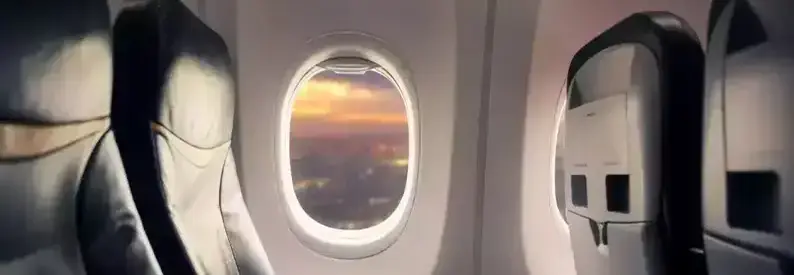Why Airplanes Have Rounded Windows: The Science Behind It

If you’ve ever flown on an airplane, you may have noticed that the windows are not perfectly rectangular but rather oval-shaped. This design choice is far from arbitrary; it stems from critical engineering considerations aimed at ensuring passenger safety and comfort. Understanding the reasons behind this unique shape reveals the complexities of aircraft design.
The Jet Age and the Birth of Rounded Windows
The design of airplane windows underwent a significant transformation during the early 1950s with the advent of commercial jets. The De Havilland Comet, launched in 1951, was the world’s first commercial jet airliner. However, the Comet faced severe issues, including midair disasters that resulted in tragic loss of life. Investigations revealed that the root cause of these catastrophic failures was the use of rectangular windows.
Mick Oakey, managing editor of The Aviation Historian, explains that sharp internal corners in a metal structure are “stress-raisers.” These corners tend to focus bending and twisting forces, making them prone to cracks and breaks. With cabin pressurization fluctuating during takeoff, cruising, and landing, the stress on the aircraft’s body intensified, leading to metal fatigue and ultimately catastrophic structural failures.
Why Rounded Windows Are Safer
After the tragic incidents involving the Comet, engineers began to understand the significance of window design in aircraft safety. Rounded windows became the new standard in aviation design, as they provide a safer alternative to the square or rectangular shapes. As Oakey notes, while the ideal design would be to eliminate windows altogether due to the added weight of glass and frames, rounded windows strike a balance between safety, weight, and passenger comfort.
The oval shape of airplane windows helps to disperse stress more evenly across the structure, minimizing the likelihood of cracks forming in critical areas. This design change significantly enhanced the safety of commercial aircraft and improved overall passenger experience.
The Evolution of Airplane Window Design
Over the years, the design of airplane windows has seen only minor refinements. Modern aircraft windows resemble those introduced after the Comet disasters, with the aviation industry standardizing the shape to “upright” ellipses that are deeper than they are wide. This modification allows airlines to fit multiple windows seamlessly between the closely spaced circular frames, or hoops, of the aircraft’s fuselage.
Interestingly, not all aircraft conformed to the rounded window design. The Sud Aviation Caravelle, introduced in the late 1950s, featured round-cornered triangular windows, showcasing an exception to the prevailing standard.
Conclusion: The Lasting Impact of Window Design
The transition to rounded windows in commercial aviation not only improved safety but also provided passengers with better views of the world below. As airlines continue to innovate and improve upon aircraft design, the fundamental principles behind rounded windows remain a crucial aspect of ensuring the safety and comfort of air travel. Understanding the science behind this design choice highlights the importance of engineering in making flying a safe and enjoyable experience for all passengers.
Related News : https://suspicious-zhukovsky.67-21-117-18.plesk.page/?s=Airplanes+Windows
